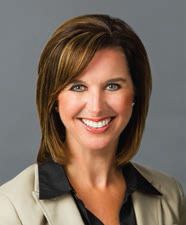
Many Fortune 500 senior executives tout the virtues of risk-taking, but
Adobe System’s Donna Morris made many groundbreaking reforms a reality for her company.
In particular, the Senior Vice President of People Resources realized that her employees’ annual performance reviews could be perceived “almost like the dreaded dental visit,” and a more versatile and ongoing assessment process needed to take its place.
Check In
“We really felt that ratings and rankings were not the way to underscore the importance of talent in the organization and instead, we wanted to manage our business such that people always knew what was expected of them, that employees always had the opportunity to receive feedback or provide feedback and that they were in an environment that could allow them to grow,” said Morris.
As a result, she substituted the annual review with an innovative program called “Check In,” which allows supervisors and their staff to set professional goals together, and then exchange live, reciprocal commentary as projects progress.
Since putting this initiative into effect, Adobe has seen:
- Decreased voluntary turnover
- Increased involuntary attrition
- Employee satisfaction with transparency
- More consistent productivity year-round
As Morris puts it, with the Check In system, employees “…are not waiting for that one time of year where they might find out some secret about their ranking or their performance.”
Socializing Business
While many HR directors are cautious of using social media sites like Facebook and Twitter for recruiting purposes, Morris has embraced the digital sphere as a way to attract talent and engage with the larger Adobe community.
"The reality is all of us are socially interacting in our personal lives and I believe the lines are blurred between your work life and your personal life. It’s more of an integration of the two,” Morris said.
She notes that when accounting for all of Adobe’s social media channels, the company can boast over 17 million internet followers.
Morris recounts a meeting where she provided all of her contact information to the conference room, but nobody followed up by phone or email. Instead, they reached out through Twitter and
LinkedIn.
“What that told me is they were very comfortable in already being in certain social channels. So to switch to something like email, which they saw as more traditional, was not going to work. So I think social needs to be something that we embrace to really ensure that we’re tapping the full potential of all employees that work for us today or might work for us in the future.”
This article was adapted from HR In A Creative Media Mecca which was originally published in the April 2014 HRD Magazine. To read more click here.

 Many Fortune 500 senior executives tout the virtues of risk-taking, but Adobe System’s Donna Morris made many groundbreaking reforms a reality for her company.
Many Fortune 500 senior executives tout the virtues of risk-taking, but Adobe System’s Donna Morris made many groundbreaking reforms a reality for her company.